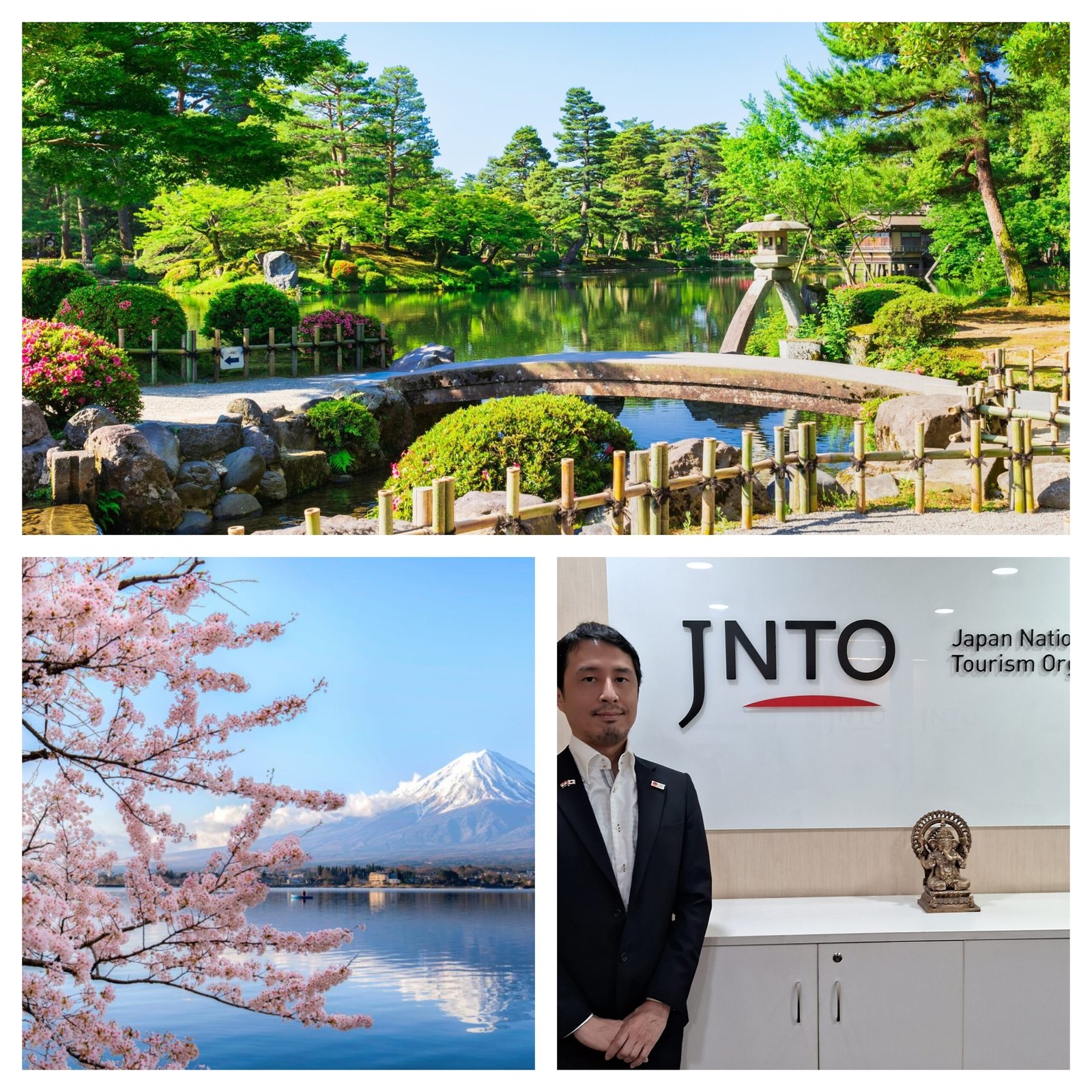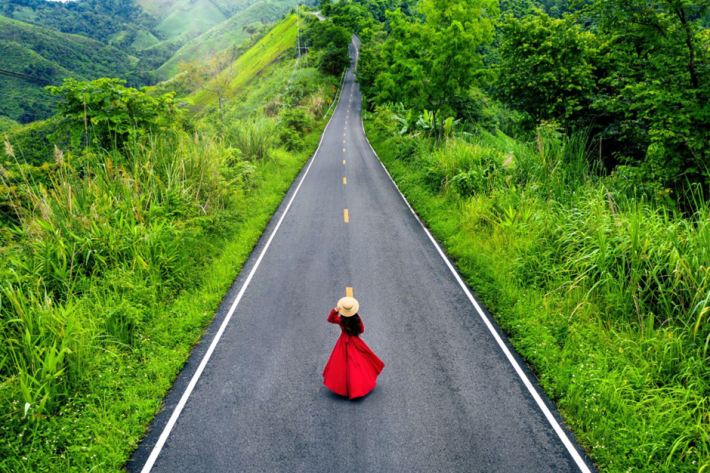When it comes to putting Japan on the global tourism map, the magnetic Ryo Bunno, Executive Director, JNTO, Delhi, doesn’t just play by the rules… he redefines them with flair. With a razor-sharp background in Journalism, Communications, Digital Marketing, and Public Relations, Ryo has seamlessly blended strategic thinking with cultural storytelling, making him one of the most dynamic voices in global tourism today.
From orchestrating PR magic at JNTO Tokyo to elevating Japan’s brand in the Philippines, and now spearheading its presence in India, Ryo’s journey reads like a masterclass in tourism diplomacy. Charismatic, creative, and endlessly curious, he’s on a mission to make Japan irresistible to the Indian traveller. In this exclusive interview, Ryo Bunno speaks with Sumita Chakraborty, Editor-in-Chief of TheGlitz, about Japan’s travel strategies and why the Indian traveller holds a special place in their vision.
Over To Ryo Bunno, Executive Director, JNTO, Delhi
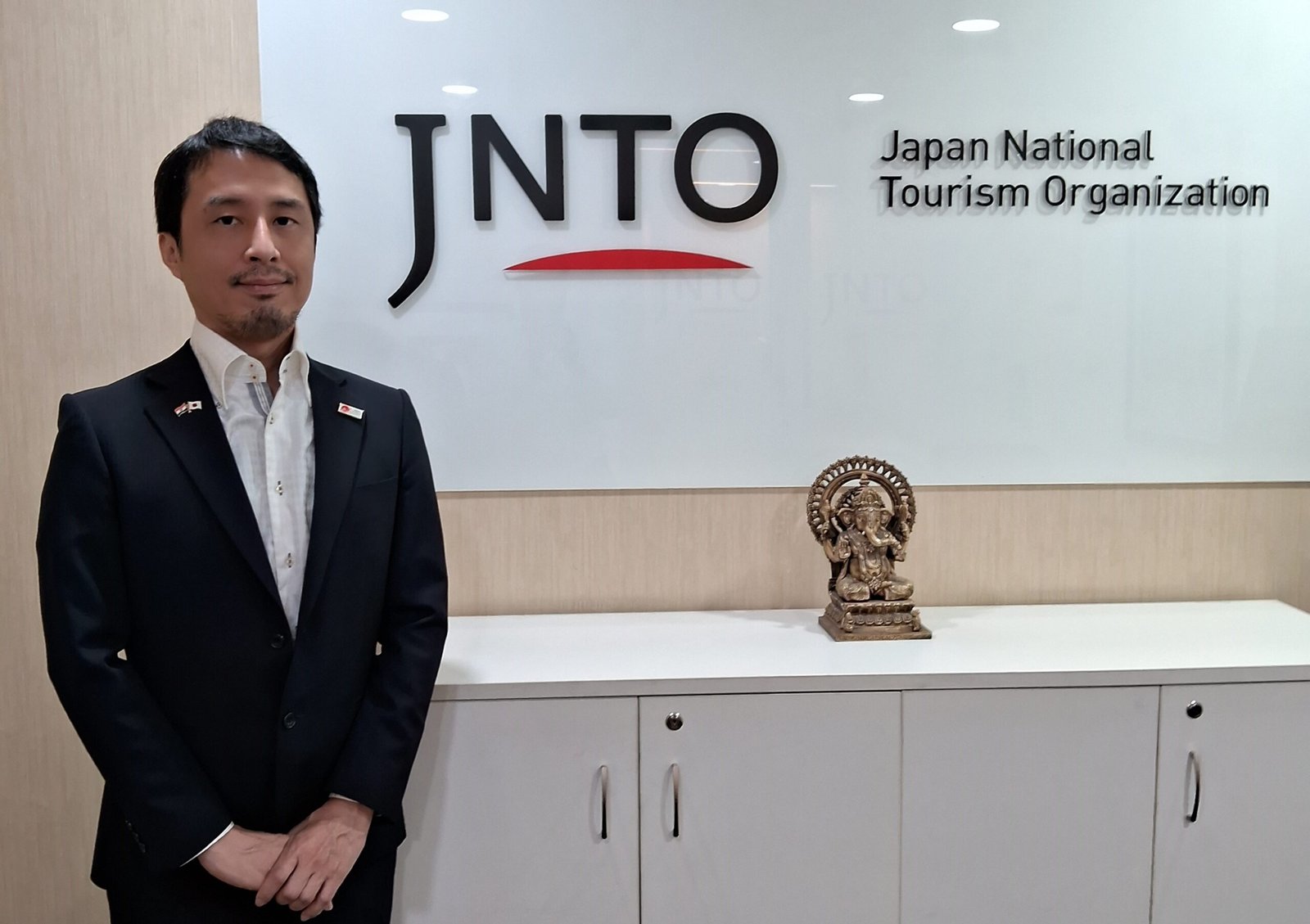
Japan is famous for seamlessly blending its rich cultural heritage with cutting-edge modernity. How does tourism in Japan reflect this unique combination of ancient traditions and futuristic innovations?
Tourism in Japan offers a truly dynamic experience, where travellers can walk through centuries-old streets in Kyoto one day and explore the neon-lit, tech-forward neighbourhoods of Tokyo the next.
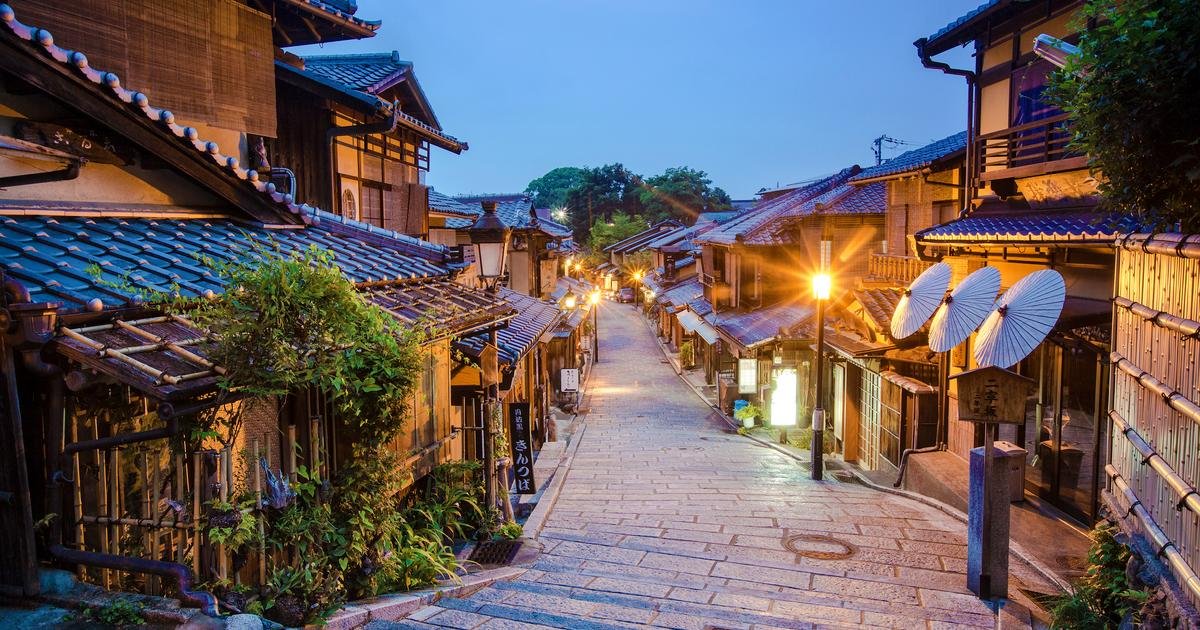

Visitors can step back in time by exploring the serene temples and shrines of Kyoto, such as Kinkaku-ji (Golden Pavilion) and Fushimi Inari Taisha, or wander through the traditional streets of Gion, where geisha culture is still alive. In Nara, tourists can encounter freely roaming deer in Nara Park and visit Todai-ji temple, home to one of the largest bronze Buddha statues in the world.
At the same time, cities like Tokyo and Osaka offer glimpses into the future. Tourists can ride the ultra-fast Shinkansen (bullet train), experience cutting-edge entertainment at places like teamLab Borderless digital art museum, and shop in districts like Akihabara, known for its tech gadgets and anime culture. In Odaiba, attractions like robot-themed restaurants and VR amusement parks take futuristic fun to a new level.
The contrast often blends in surprising ways. At Tokyo’s Asakusa, you can visit the ancient Senso-ji temple and then shop for the latest electronics just a few stops away in Akihabara. In Kyoto, many Ryokan (traditional Japanese inns) are now equipped with modern stuff like heated flooring, smart toilets, and even AI concierge services.
Japan also integrates innovation into its natural tourism. In Hokkaido, visitors can enjoy traditional hot springs (onsen) with snow-capped mountain views, while ski resorts use advanced snowmaking and lift systems. Even Mount Fuji, a UNESCO World Heritage site and symbol of Japan’s natural beauty, is accessible via efficient transport.
Whether you’re soaking in history at Hiroshima’s Peace Memorial Park or marvelling at humanoid robots at Miraikan (National Museum of Emerging Science and Innovation) in Tokyo, Japan offers a travel experience where the past and future coexist in perfect harmony.
Expo 2025 Osaka, Kansai, Japan scheduled from April 13 to October 13, 2025, under the theme “Designing Future Society for Our Lives,” this event aims to co-create solutions for global challenges by merging cultural heritage with cutting-edge technology. For more information, visit: https://www.expo2025.or.jp/en/
Destinations like Kanazawa and Takayama preserve samurai-era architecture and crafts, while Odaiba and Akihabara showcase robotics, virtual reality, and interactive digital art. Japan’s ability to celebrate the past while innovating for the future creates an immersive journey for visitors seeking both authenticity and awe.
The cherry blossom season draws thousands of visitors each year. What other seasonal experiences or festivals should tourists explore to experience the full range of Japan’s natural beauty?
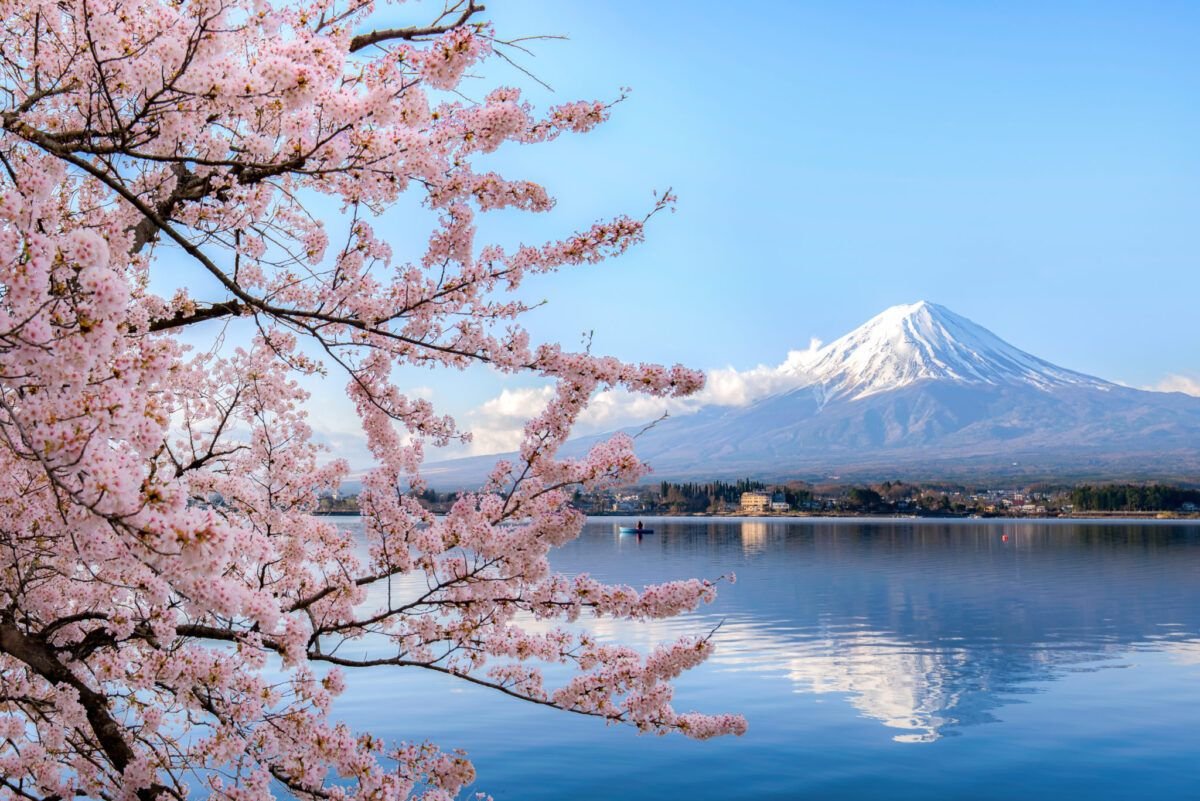
Great question! While cherry blossom season (sakura) is undeniably iconic, Japan offers spectacular seasonal experiences throughout the year that showcase its incredible natural beauty and cultural richness. Here are some must-experience seasonal highlights beyond spring:
Autumn (October to early December)
Autumn foliage in Japan can be experienced from mid-October to early December. It will start from the northern most prefecture-Hokkaido and travel to south covering up to Okinawa islands. Hence, there are many spots where autumn foliage can be experienced beyond typical Golden route which is Tokyo, Osaka, Kyoto and Hiroshima.
In Hokkaido, mountains, gardens, and background transform with fiery hues of red, orange, and gold. Similarly, you can find many famous gardens and best viewing spots in Hokuriku and Tohoku region. Tateyama Kurobe Alpine Route is another popular and one of the top mountain sightseeing routes, best way to get an eyeful of autumn is via ropeway. Many of the featured spots also offer nighttime illumination for a magical atmosphere different than the daytime. Autumn foliage can be enjoyed all over Japan. You can find your own landscape and best spot.For best experiences, visitors are advised to check the latest forecast and plan accordingly.
Winter (December to February)
Hokkaido, Japan’s northern island, is renowned for its exceptional powder snow, making it a popular destination for skiers and snowboarders.
- Sapporo Snow Festival (Hokkaido, February): World-famous for its massive, intricate snow and ice sculptures, light displays, and snow slides.
- Otaru Snow Light Path Festival: A romantic and serene event where candle-lit lanterns line snowy canals and streets.
- Onsen (Hot Spring) Experiences: Regions like Yufuin, Kusatsu, and Hakone offer magical snowy onsen getaways — especially beautiful when paired with traditional ryokan stays.
- Zao Snow Monsters (Yamagata): These naturally formed “monsters” are snow-covered trees shaped by icy winds and can be viewed by ropeway or while skiing.
- Ski and snow boarders: Hokkaido, Nagano, Niigata are famous for powder snow and it’s a paradise for skiers and snowboarders from around the world. Niigata is known for its heavy snowfall; the region turns into a white paradise perfect for snow lovers.
Summers (June – August):
- Nebuta Matsuri Festival (Aomori city, August): During this festival, giant illuminated floats shaped like mythical warriors’parade through the streets.
- Awa odori festival (Tokushima, Shikoku – August): It is one of the most energetic festivals with taiko drums, flutes, and shamisen, the festival creates a joyful rhythm that’s truly contagious. Locals and visitors alike join in the celebration, making it a uniquely participatory experience.
- Fireworks Festivals (Hanabi Taikai): Summer skies light up across Japan in festivals like the Sumida River Fireworks in Tokyo and Nagaoka Fireworks in Niigata — both massive, crowd-pulling events.
- Lavender Fields in Furano (Hokkaido): In full bloom around July, these fields create breathtaking purple landscapes backed by mountains and clear skies.
- At Tateyama Kurobe Alpine Route, one can experience snow wall as high as 20 meters. Alos, along the route is Kurobe dam – highest altitude dam in Japan. Alpine route opens from mid-April onwards when Murado (part of alpine route) is still covered with snow.
Mid-May to June is also an ideal travel period for the Indian market. Following Japan’s Golden Week (late April to early May), local residents return to work and school, and the influx of international tourists typically subsides. This results in quieter attractions, greater hotel availability, and more competitive travel costs. These months also align with school holidays in many parts of India, making it a popular time for family vacations. Indian travellers can enjoy Japan’s top tourist destinations with greater ease and comfort, while avoiding peak-season crowds.
Japan’s commitment to sustainability is increasingly prominent. What initiatives are being taken to promote responsible tourism, especially in rural areas or cultural landmarks, while maintaining the balance of local life?
Japan is actively fostering sustainable tourism by promoting travel to lesser-known regions, encouraging longer stays, and supporting local economies. By highlighting hidden gems like charming villages, coastal towns, and scenic mountainous areas, DEL office aims to showcase its diverse culture and natural beauty. We also encourage longer stays, allowing visitors to connect more deeply with local traditions and lifestyles. In rural areas, travellers can engage and enjoy eco-lodges, organic farm stays, and community-led experiences. Initiatives such as waste reduction, heritage preservation, and promoting public transport options are helping reduce the impact on crowded urban hubs. Visitors are encouraged to engage respectfully with local cultures, ensuring tourism enhances rather than disrupts traditional lifestyles.
Japan has an array of lesser-known but equally captivating destinations outside the major cities like Tokyo and Kyoto. Could you share some hidden gems that you believe tourists should visit for an authentic Japanese experience?
Japan offers a wealth of travel destinations beyond the well-trodden Golden Route (Tokyo, Osaka, Kyoto, and Hiroshima). For those looking to explore off-the-beaten-path experiences, consider Kanazawa:
- Kenrokuen Garden: One of Japan’s most celebrated gardens, Kenrokuen is a perfect blend of ponds, streams, and seasonal flowers. The garden offers stunning views throughout the year, making it a must-visit.
- Higashi Chaya District: This historic geisha district features traditional wooden teahouses that date back to the Edo period. Visitors can explore the narrow streets, enjoy tea ceremonies, and try local sweets.
- 21st Century Museum of Contemporary Art: This remarkable museum showcases both Japanese and international contemporary art. The architecture of the museum itself is a sight to behold.
- Nagamachi Samurai District: Wander through this well-preserved area where samurai once lived. You can visit former samurai residences, such as the Nomura House, which showcases traditional furnishings and gardens.
Biei and Furano (Hokkaido): These neighbouring towns are famous for their stunning flower fields and picturesque landscapes, especially during summer. The vibrant lavender fields in Furano and the rolling hills of Biei provide breathtaking views, attracting photographers and nature lovers.
Ise-Shima National Park: This coastal region is known for its stunning scenery, including rugged coastlines, serene beaches, and rich marine life. The Ise Grand Shrine, one of Shinto’s holiest places, attracts visitors seeking spiritual experiences, while the surrounding area offers fresh seafood and traditional experiences.

Tottori Sand Dunes: As Japan’s only large sand dunes, the Tottori Sand Dunes offer a unique landscape where visitors can enjoy activities such as sandboarding, camel rides, and paragliding. The nearby Sand Museum features incredible sand sculptures created by artists from around the world.
Yakushima: A UNESCO World Heritage Site, Yakushima is known for its ancient cedar forests, some of which are thousands of years old. The island’s lush landscapes and diverse wildlife, including the Yakushima macaque and endangered loggerhead turtles, make it a great destination for hiking and nature enthusiasts.
Okinawa: Known for its beautiful beaches and unique culture, Okinawa offers a different side of Japan. The islands have a rich Ryukyu history, distinct cuisine, and vibrant traditional music. Shurijo Castle, a UNESCO World Heritage Site, showcases Okinawan history, while the island’s coral reefs attract snorkeling and diving enthusiasts.
With the growth of wellness tourism, Japan’s traditional practices like onsen (hot springs) and zen gardens have become more popular. How are you positioning Japan as a wellness destination while honoring its centuries-old traditions?
Japan’s wellness offerings are rooted in centuries of tradition, making them both culturally rich and holistically beneficial.

In Kusatsu Onsen (Gunma Prefecture, about 3 hours from Tokyo), travellers can soak in some of Japan’s most acidic and mineral-rich hot springs. On the southern island of Kyushu, Beppu (Ōita Prefecture) boasts one of the highest volumes of hot spring water in the world, with a variety of baths—from mud and sand baths to steam and foot spas—each offering unique healing properties.
For a more spiritual approach to wellness, Koyasan (Wakayama Prefecture, near Osaka) offers immersive temple stays. Visitors can join morning prayers, practice meditation, and enjoy “ShojinRyori” – a traditional Japanese Buddhist vegetarian cuisine, plant based designed to purify the body and mind—all while surrounded by the sacred stillness of an ancient mountain forest.
Visitors can practice forest bathing (shinrin-yoku) in ancient cedar woods or find tranquillity in meticulously maintained Zen gardens. These practices are being thoughtfully introduced to travellers, preserving their spiritual and therapeutic essence while adapting to contemporary wellness needs. In doing so, we are not just promoting wellness but inviting the Indian tourists to experience wellness, the Japanese way.
Given Japan’s extensive history and unique cultural practices, what steps is the tourism sector taking to ensure that visitors can engage meaningfully with local communities and understand the cultural significance of the places they visit?
To deepen visitor engagement, Japan offers immersive experiences like homestays, traditional workshops and guided cultural walks led by locals. Temple lodging (shukubo), samurai towns, and agricultural stays allow travellers to live like locals, even if briefly. These experiences are designed to build respectful cultural exchange and awareness, helping visitors appreciate not just the aesthetics but the stories and customs that define each region.
List is endless with some more common cultural experiences to offer are:
- Kimono Dressing & Heritage Walks: Dress in traditional attire and stroll through historic districts.
- Hands-On Traditional Crafts: Try your hand at pottery, indigo dyeing, calligraphy, or washi paper-making in workshops led by local artisans.
- Temple Stays (Shukubo): Overnight stays at Buddhist temples like those on Mount Koya include morning prayers, meditation, and vegetarian temple cuisine.
- Festival Participation: Many regional tourism offices now help visitors join in matsuri (Japanese festivals), giving them a first-hand feel of Japan’s community celebrations.
Also, Indian visitors are increasingly showing interest for special cultural experiences and adding to their itineraries, such as:
1. Participating in a Traditional Tea Ceremony
The Japanese tea ceremony is a beautiful expression of harmony, mindfulness, and hospitality. In cities like Kyoto and Kanazawa, visitors can join guided tea sessions led by trained tea masters, learning not just the ritual but the philosophy behind every gesture and movement.
2. Exploring Samurai Districts and Residences
Regions such as Kakunodate, Kanazawa, and parts of Kyoto preserve historic samurai neighbourhoods where travellers can tour original residences, see weapons in museums, and learn about bushido—the samurai way of life. Many tours are led by local storytellers who offer deep insights into Japan’s warrior past.
3. Uncovering Ninja Culture
In Iga and Koka, known as the birthplaces of ninja traditions, visitors can explore interactive ninja museums, stealth training areas, and historical ninja homes. These experiences go beyond the myths, offering real historical context and even hands-on training in ninja techniques.
4. Visiting Sumo Wrestling Stables
Tourists can observe live sumo training in stables (heya- a place where sumo wrestlers live, train, eat, and follow a strict daily routine) across Tokyo and Osaka. Watching wrestlers train at close range is a powerful experience, often accompanied by explanations from guides who share the spiritual and ritualistic roots of sumo wrestling, Japan’s national sport.
5. Staying at a Traditional Ryokan
A night at a ryokan (traditional Japanese inn) is one of the most immersive cultural experiences a traveler can have. Set in serene natural settings or historic districts, ryokan stays typically include:
- Sleeping on tatami floors with futon bedding
- Wearing a yukata (casual kimono)
- Enjoying a meticulously prepared kaiseki dinner featuring seasonal, local ingredients
- Soaking in a natural onsen (hot spring bath), often with views of mountains, rivers, or traditional garden. This experience offers not just relaxation, but a deep sense ofJapanese hospitality at its finest.
Japan’s food culture has gained immense international popularity. Can you share how the tourism sector is enhancing food tourism, and what’s the next big trend in Japan’s culinary scene?
Food tourism in Japan is more than dining—it’s storytelling through ingredients, seasons, and locality. Travelers can embark on culinary journeys from sushi-making classes to sake brewery visits. There’s growing trend on regional specialties and Japanese style cuisines among foreign tourists.
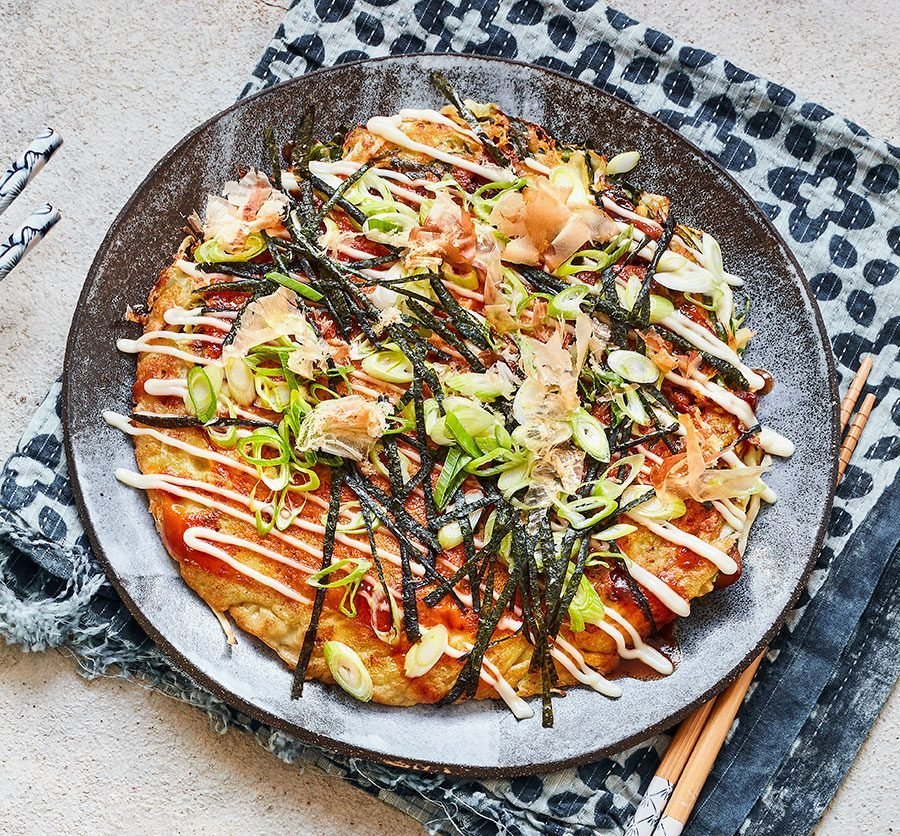
Street food is a beloved part of the Japanese food experience. Food stalls at festivals, markets and around shopping hubs offer an authentic and flavourful glimpse into everyday Japanese life. And of course, no trip to Japan is complete without indulging in ramen—a soul-satisfying bowl of noodles that varies in preparation and ingredients region by region. Okonomiyaki, often called “Japanese pancake,” is a must-try in Osaka and Hiroshima, made with cabbage, batter, and a variety of toppings, then grilled to perfection. Equally popular is Yakitori—skewered, charcoal-grilled chicken seasoned with salt or sauce—best to be experienced at a local ‘Izakayas – A traditional Japanese pubs’ often local ones are small and open-air food stalls, offering a casual yet mouthwatering taste of Japanese comfort food.
Japan’s dining culture is deeply rooted in tradition, craftsmanship, and seasonality, offering foreign tourists a variety of immersive and memorable dinner experiences. Among the many culinary styles, Kaiseki, Robatayaki, Teppanyaki, and ShojinRyori each offer a unique way to experience the essence of Japanese cuisine.
Kaiseki is the pinnacle of Japanese haute cuisine—a beautifully curated multi-course set meal that emphasizes seasonal ingredients, elegant presentation, and refined flavours. Often enjoyed in ryokans or upscale restaurants, Kaiseki reflects Japan’s deep connection to nature and aesthetics.
Robatayaki is a lively experience where chefs (or guests themselves) grill fresh seafood, vegetables, and meats over hot charcoal, serving them directly to guests with long wooden paddles. The open-fire cooking and warm, communal setting make Robatayaki an engaging and flavourful experience.
Teppanyaki brings a theatrical flair to the dining table. In this style, skilled chefs cook ingredients such as premium beef, seafood, and vegetables on a hot iron griddle right in front of diners. With precision and showmanship, Teppanyaki combines exquisite taste with an entertaining performance.
ShojinRyori is the traditional Buddhist vegetarian cuisine of Japan, rooted in Zen philosophy. Developed by monks and served in temple lodgings, ShojinRyori features plant-based dishes made with seasonal vegetables, tofu, and seaweed, prepared with deep mindfulness and balance. It offers a peaceful and spiritual dining experience, ideal for those seeking a moment of reflection and wellness.
Whether you’re indulging in the refined elegance of Kaiseki, the smoky charm of Robatayaki, the interactive artistry of Teppanyaki, or the serene simplicity of ShojinRyori, dinner in Japan offers something for every palate and curiosity. Japan also known for ‘Matcha’ (finely ground green tea powder) is not only a staple of tea ceremonies but also a flavour superstar in modern Japanese desserts. Tourists can indulge in matcha ice cream, matcha chocolates, mochi, and cakes.
Additionally, several kinds offood experiences are available for curious travellers
- Tofu tours in places like Kyoto, where visitors can see how tofu is handcrafted from local soybeans
- Japanese sweets (wagashi) workshops, using ingredients like matcha, azuki beans, and seasonal fruits
- Soba or Sushi making workshops are easily available and booked for Indian groups.
During FAM trips organized by JNTO DEL office, we have included these experiences for Indian travel agents and have received positive feedback.
8. Looking ahead, what vision do you have for the future of tourism in Japan? How do you see the industry evolving over the next decade in terms of visitor experience and sustainability?
Japan is shaping tourism industry that’s inclusive, immersive, and environmentally conscious. There’s a clear shift toward smart tourism merging technology and sustainability for smoother and sustainable travelwhile also investing in the preservation of cultural and natural heritage. The focus will continue to move toward high-value, low-impact tourism, with deeper engagement, longer stays, introducing newer regions and a stronger connection to local communities at the core of the visitor experience.
9. Japanese culture has a strong following in India, from anime to cuisine and traditional arts. How is Japan attracting Indian travelers, and what cultural experiences or initiatives are you introducing to cater to their growing interest in both modern and traditional aspects of Japan?
Japan a global anime culture powerhouse with many versions like Japan’s anime, manga, films, and video games. Fans are naturally drawn to visiting the real-world locations featured in their favourite series.
Ghibli Park (Aichi), Super Nintendo World (USJ, Osaka) – Bringing Mario Kart and Donkey Kong adventures to life, Pokémon Centers& Pokémon Cafés, Akihabara & Ikebukuro (Tokyo) – Famous for vibrant anime and manga culture and gaming hotspots, featuring themed cafés and exclusive merchandise.
While Japan is already famous for anime, gaming, and live-action film sets, the world of Harry Potter has also become a major travel driver for fans. Warner Bros. Studio Tour Tokyo – The Making of Harry Potter, opened in June 2023 and Tokyo DisneySea, the only sea-park of its kind in the world, making it a bucket-list destination for Disney fans worldwide.
To further promote Japan as a travel destination among Indian audiences, Japan Travel Fair (JTF) and Mela Mela Anime Japan was held last year in 2024. The event attracted many Indian anime enthusiasts, introducing them to Japan’s rich anime culture, lifestyle, and travel opportunities. It served as a gateway for fans to explore real-world locations from their favourite anime and OTT shows, sparking interest in traveling to Japan. Visitors at the Japan Travel fair (JTF) discovered off-the-beaten-path destinations, beyond Golden route like alpine route, Okinawa, Hokkaido, etc including seasonal attractions across Japan’s four distinct seasons, offering diverse experiences.
Further amplifying this trend, Aamir Khan Productions recently filmed an upcoming bollywood movie in Sapporo, the capital of Hokkaido. This film showcases the breathtaking landscapes of Sapporo and Otaru, marking the first time these locations have been prominently featured in Indian cinema. Its anticipated release later this year is expected to significantly boost tourism to Sapporo among Indian travellers. Additionally, the upcoming Crayon Shin-chan movie is set to feature India as a central setting. This marks a significant milestone, as it is the first time the beloved series will showcase Indian locales, potentially fostering cultural exchange and deepening connections between the two countries. The film is scheduled for release in India in 2025.
